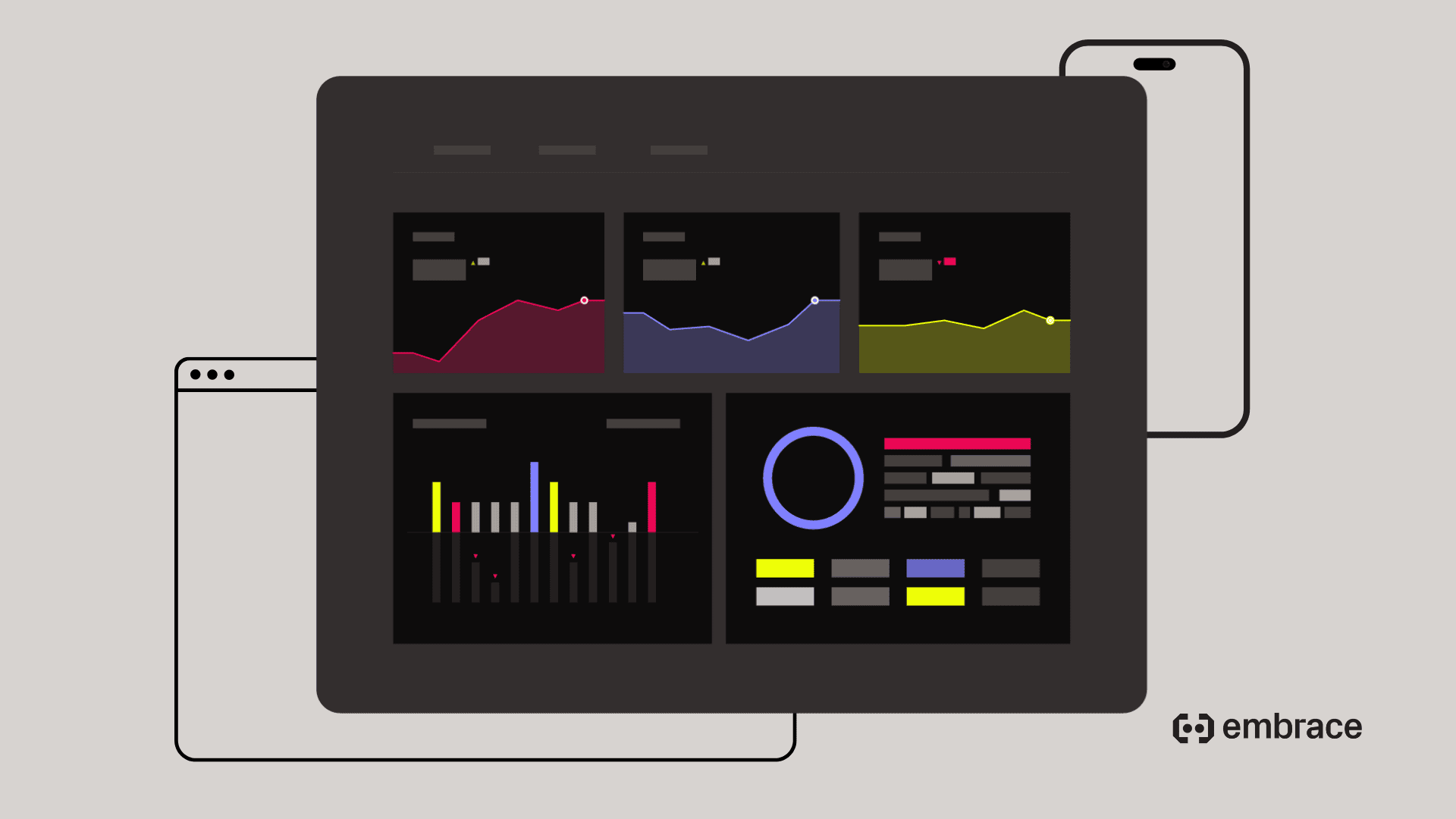What Is Real User Monitoring (RUM)?

In this article, we’ll explore the fundamentals of RUM, how it works, how it compares to synthetic monitoring, and why it’s a critical component of modern application observability.
Understanding what real user monitoring (RUM) is, is essential for organizations aiming to deliver seamless digital experiences. RUM provides direct insight into how actual users interact with your applications, enabling teams to identify performance bottlenecks, optimize user journeys, and ensure reliability. In this article, we’ll explore the fundamentals of RUM, how it works, how it compares to synthetic monitoring, and why it’s a critical component of modern application observability.
What is Real User Monitoring (RUM) and How Does It Work
Real User Monitoring (RUM) is a performance monitoring technique that captures and analyzes the interactions of real users with your web or mobile applications. Unlike traditional monitoring tools that rely on simulated traffic or predefined scripts, RUM collects data from actual user sessions, providing a comprehensive view of the end-user experience.
How RUM Works
RUM operates by embedding lightweight scripts or SDKs into your application. These scripts collect data on key performance metrics such as page load times, resource fetch durations, user interactions, and errors. The collected data is then transmitted to a central analytics platform for aggregation and analysis.
For example, when a user visits your website, the RUM script records how long it takes for the page to load, how quickly images and scripts are rendered, and whether any errors occur during the session. This real-time data enables teams to pinpoint issues as they arise and understand how different environments, devices, or network conditions impact user experience.
If you’re looking to enhance your RUM strategy specifically for mobile apps, explore modern mobile observability solutions that provide comprehensive insight into user sessions and performance across devices.
Real User Monitoring vs Synthetic Monitoring: Understanding the Differences
While both RUM and synthetic monitoring aim to measure application performance, they do so in fundamentally different ways. Understanding these differences is crucial for building a robust observability strategy.
Real User Monitoring (RUM)
- Data Source: Captures data from real users interacting with your application in production environments.
- Coverage: Reflects actual user journeys, device types, geographies, and network conditions.
- Use Cases: Identifying real-world performance issues, tracking user behavior, and measuring the impact of changes on end-users.
Synthetic Monitoring
- Data Source: Uses automated scripts or bots to simulate user interactions from predefined locations and devices.
- Coverage: Provides controlled, repeatable tests but may not reflect the diversity of real user environments.
- Use Cases: Benchmarking, uptime monitoring, and proactive detection of outages or regressions.
Key Differences
RUM offers a holistic view of the user experience by capturing real-world data, while synthetic monitoring excels at controlled testing and early detection of issues. For comprehensive observability, many organizations use both approaches in tandem. To gain the best of both worlds, consider platforms with integrated performance profiling and troubleshooting capabilities.
Benefits and Importance of Implementing RUM for Your Applications
Implementing real user monitoring delivers several tangible benefits for organizations seeking to optimize application performance and user satisfaction.
1. Accurate Performance Insights
RUM provides granular, real-time data on how your application performs for actual users. This enables teams to identify slow-loading pages, resource bottlenecks, and regional performance disparities that may not surface in synthetic tests.
2. Enhanced User Experience
By understanding what real user monitoring is and leveraging its insights, organizations can proactively address issues that impact user satisfaction. For example, if users in a specific region experience slow load times, targeted optimizations can be implemented to improve their experience.
3. Data-Driven Decision Making
RUM empowers teams to make informed decisions based on real usage patterns. This includes prioritizing feature development, optimizing infrastructure, and validating the impact of code changes on end-users.
4. Faster Issue Resolution
With real-time visibility into user sessions, teams can quickly detect, diagnose, and resolve performance issues before they escalate. This reduces downtime and minimizes the risk of negative user reviews or churn. Solutions like mobile issue resolution tools can help accelerate this process and reduce mean time to resolution.
5. Compliance and SLA Monitoring
For organizations with strict service level agreements (SLAs) or regulatory requirements, RUM provides the necessary data to demonstrate compliance and maintain accountability.
How RUM Captures and Analyzes User Interactions in Real-Time
RUM solutions are designed to capture a wide range of user interactions and performance metrics as they happen. Here’s how the process typically works:
1. Data Collection
A RUM script or SDK is integrated into your application. As users interact with the app, the script collects data on:
- Page load times
- Resource fetch durations (images, scripts, APIs)
- User interactions (clicks, scrolls, navigation)
- Errors and exceptions
- Device and browser information
- Network conditions
For mobile-specific RUM, advanced mobile network insights can provide even deeper understanding of how network conditions impact mobile user experiences.
2. Data Transmission
Collected data is securely transmitted to a centralized analytics platform, often in real time or near real time. This ensures that performance issues can be detected and addressed promptly.
3. Data Aggregation and Analysis
The analytics platform aggregates data from all user sessions, enabling teams to:
- Visualize performance trends over time
- Segment data by device, location, or user cohort
- Identify recurring issues or anomalies
- Drill down into individual user sessions for root cause analysis
4. Actionable Insights
By analyzing real user data, organizations can prioritize optimizations that have the greatest impact on user experience. For example, if a specific API call consistently causes delays, engineering teams can focus their efforts on improving its performance.
Take the Next Step: Unlock Real User Insights for Your Applications
Ready to see how real user monitoring can transform your application performance and user experience? Discover the actionable insights and proactive solutions that RUM provides. Take control of your digital experience today.